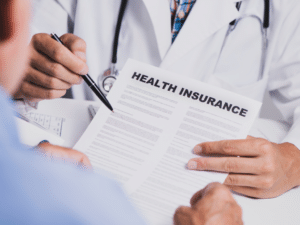Undergoing gallbladder removal surgery, also known as cholecystectomy, is a common procedure aimed at alleviating symptoms caused by gallstones or other gallbladder-related issues. Fortunately, while the surgery itself is routine, understanding the recovery process is crucial for a smooth and successful healing journey.
At IBI Clinic, we prioritize patient education and support throughout the recovery process. In this guide, we will walk you through what to expect during your recovery, whether you have undergone laparoscopic or open surgery.
Understanding Gallbladder Removal Surgery
What Is Cholecystectomy?
Cholecystectomy is the surgical removal of the gallbladder, a pear-shaped organ located beneath the liver that stores bile produced by the liver. Bile, in turn, aids in the digestion of fats. When the gallbladder becomes diseased or develops gallstones, removal may be necessary.
Types of Gallbladder Removal Surgery
- Laparoscopic Cholecystectomy: This minimally invasive procedure involves small incisions and the use of a camera to guide the surgeon. As a result, patients often experience shorter recovery times and less postoperative pain.
- Open Cholecystectomy: In cases where laparoscopic surgery is not feasible, a larger incision is made to remove the gallbladder. Consequently, this method typically requires a longer hospital stay and recovery period.
Gallbladder Removal Recovery Time
Immediate Postoperative Period
After your surgery, you will spend time in a recovery room as the anesthesia wears off. Meanwhile, pain management will be provided, and you will be monitored for any immediate complications.
- Laparoscopic Surgery: Most patients can go home the same day or the next morning. Additionally, you will be encouraged to walk and drink fluids shortly after surgery.
- Open Surgery: A hospital stay of 2 to 4 days is typical. During this time, you will begin with light activities and gradually increase them as tolerated.
Short-Term Recovery (First 1–2 Weeks)
During the first two weeks, focus on rest and gradual activity.
- Pain Management: Expect some discomfort around the incision sites. Typically, over-the-counter pain relievers are sufficient, but your doctor may prescribe stronger medication if needed.
- Dietary Adjustments: Start with clear liquids and gradually introduce bland, low-fat foods. Avoiding heavy, greasy meals helps prevent digestive upset.
- Physical Activity: Avoid strenuous activities and heavy lifting. However, gentle walking can help improve circulation and prevent complications.
Medium-Term Recovery (2–4 Weeks)
By the second week, many patients feel significantly better.
- Return to Work: Depending on your job, you may return to work within 5 to 10 days after laparoscopic surgery. On the other hand, open surgery may require a longer recovery period.
- Driving: Most individuals can resume driving within 3 to 5 days, provided they are no longer taking narcotic pain medications and can perform emergency maneuvers without discomfort.
- Follow-Up Appointments: Attend all scheduled follow-up visits to monitor healing and address any concerns. Furthermore, these appointments help prevent complications.
Long-Term Recovery (1–2 Months)
Full recovery can take several weeks to months, depending on individual health factors.
- Dietary Normalization: Most people can return to a normal diet within 4 to 6 weeks. However, some may experience changes in digestion, such as diarrhea or bloating, which typically resolve over time.
- Physical Activity: Gradually resume normal activities, including exercise, as advised by your healthcare provider.
- Monitoring for Complications: Be aware of any unusual symptoms, such as persistent pain, jaundice, or fever, and seek medical attention promptly.
Tips for a Smooth Recovery
- Stay Hydrated: Drink plenty of fluids to aid digestion and prevent constipation.
- Eat Small, Frequent Meals: This can help your digestive system adjust post-surgery.
- Avoid Alcohol and Caffeine: These can irritate your digestive system and should be limited during recovery.
- Listen to Your Body: Rest when needed and avoid pushing yourself too hard.
- Follow Medical Advice: Adhere to all postoperative instructions provided by your healthcare team.
Additionally, these steps can make your recovery smoother and reduce the likelihood of complications.
When to Contact IBI Clinic
While most individuals recover without complications, it is essential to monitor your health during the recovery period. Contact IBI Clinic if you experience:
- Persistent or worsening abdominal pain
- Fever or chills
- Jaundice (yellowing of the skin or eyes)
- Unusual swelling or redness at the incision sites
- Nausea or vomiting that does not improve
Our team is here to support you through every step of your recovery process.
Conclusion: Gallbladder Removal Recovery Time
Understanding the recovery timeline after gallbladder removal surgery helps set realistic expectations and promotes a smoother healing process. Whether you have undergone laparoscopic or open surgery, following your healthcare provider’s instructions and taking proactive steps can lead to a successful recovery.
At IBI Clinic, we are committed to providing comprehensive care and support to our patients. Therefore, if you have any questions or concerns during your recovery, do not hesitate to reach out. Your health and well-being are our top priorities.










